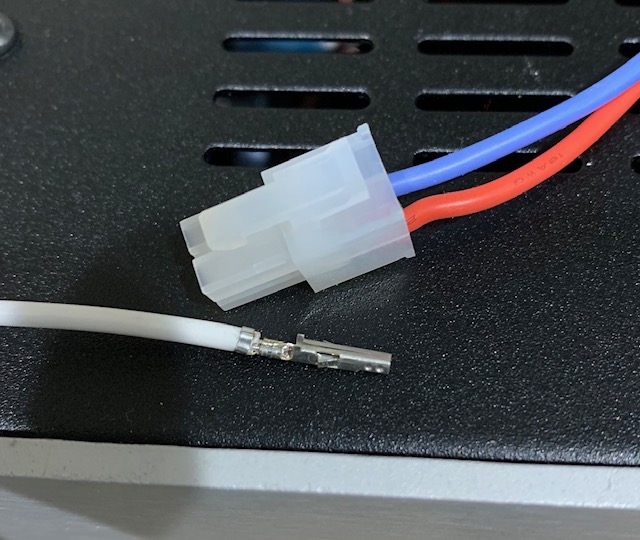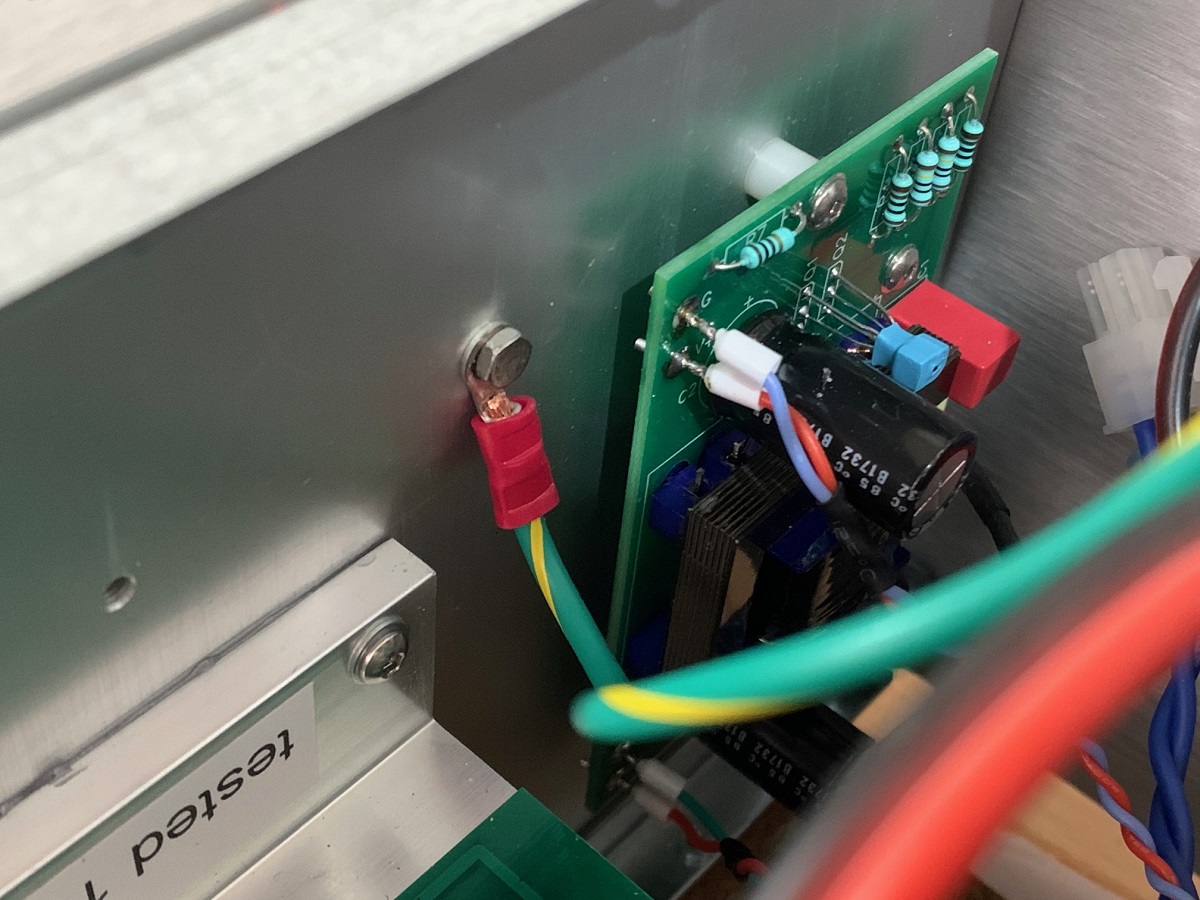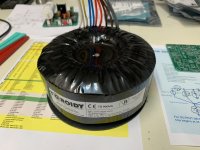Hi Anand,
I prefer direct connection. This way it does not become a point of failure.
All the best!
Do
I prefer direct connection. This way it does not become a point of failure.
All the best!
Do
Anand,
Here's another part that should work:
https://www.newark.com/molex/39-28-1043/connector-header-4pos-2row-4-2mm/dp/38C9738
Still available at Newark, but out of stock at Mouser and Digikey it seems...
Do,
I am not sure if the X and JPS64 made provision for directly connecting the MOSFET to the board - can you check please?
P.S. Found a higher priced item that is available at both Digikey and Mouser: Check for Molex part # 39-29-0043
Here's another part that should work:
https://www.newark.com/molex/39-28-1043/connector-header-4pos-2row-4-2mm/dp/38C9738
Still available at Newark, but out of stock at Mouser and Digikey it seems...
Do,
I am not sure if the X and JPS64 made provision for directly connecting the MOSFET to the board - can you check please?
P.S. Found a higher priced item that is available at both Digikey and Mouser: Check for Molex part # 39-29-0043
Last edited:
Not direct connection but what I meant was direct solder the wires to the PCB.
Do
Got it Do, flying leads directly soldered to the PCB.
Totally agree! 🙂
Andy
PS: If anybody wants them, I have some 4-pin Molex/Wurth connectors left over - I certainly will never be using them again!
Do,
I considered direct solder option as well but since it was going in my NPXP I wanted something quick. I might reconsider it if the Alpha Nirvana sonics are so good that it becomes a permanent build. I think X’s original idea was to design something flexible, quick but reliable (ie not oscillate).
Zman,
Thanks for the Molex option. I had seen that before but didn’t know if it would mate with the male Wurth connectors I have. It should, given that it is 4 pin, etc…just more expensive.
Thank you both!
Best,
Anand.
I considered direct solder option as well but since it was going in my NPXP I wanted something quick. I might reconsider it if the Alpha Nirvana sonics are so good that it becomes a permanent build. I think X’s original idea was to design something flexible, quick but reliable (ie not oscillate).
Zman,
Thanks for the Molex option. I had seen that before but didn’t know if it would mate with the male Wurth connectors I have. It should, given that it is 4 pin, etc…just more expensive.
Thank you both!
Best,
Anand.
Last edited:
Wurth and Molex Minifit 4 pin are interchangeable. When properly crimped, they are a very reliable and easy to disconnect/reconnect option.
This is what a good crimp looks like (the wire is wrapped evenly and tightly with the metal pinch band, the wire part is tightly crimped with a cold weld.

This is what a good crimp looks like (the wire is wrapped evenly and tightly with the metal pinch band, the wire part is tightly crimped with a cold weld.
Last edited:
Hi X,
I appreciate a good example of a properly crimped Molex connector. However, the problem for occasional users like myself is that there are too many types of these connectors and housings to know what to use, UNLESS the parts are explicitly indicated by designers/PCB makers.
I have carefully watched and read this thread in order to build Hugh’s Alpha Nirvana design, but after all this I’m still not sure that I have the right connectors and housings, as well as the right crimp tools to make it happen.
I appreciate a good example of a properly crimped Molex connector. However, the problem for occasional users like myself is that there are too many types of these connectors and housings to know what to use, UNLESS the parts are explicitly indicated by designers/PCB makers.
I have carefully watched and read this thread in order to build Hugh’s Alpha Nirvana design, but after all this I’m still not sure that I have the right connectors and housings, as well as the right crimp tools to make it happen.
Francois G,
If crimping makes you uncomfortable, you can hack readymade cables; something like this:
https://www.amazon.com/OOMIAK-Power-Supply-Female-Extension/dp/B07R3YG2B4
- Keep the male header that is required and cut off the other end.
- Identify the 3 pins that correspond to the ones for the MOSFETs on the amp PCB, and cut off (or clearly mark) the wire that is not required.
- There are 2 colors of wires - black and yellow - if you want a 3rd color, wrap heat-shrink tubing of a different color around one of the wires.
- Connect the Source, Gate, and Drain of MOSFETs to the correct individual wires and triple check.
I used a premade cable harness like this for my FH9HVX amplifier build. The wires were not as high quality as the ones X and Vunce have used, but the amplifier works fine.
If crimping makes you uncomfortable, you can hack readymade cables; something like this:
https://www.amazon.com/OOMIAK-Power-Supply-Female-Extension/dp/B07R3YG2B4
- Keep the male header that is required and cut off the other end.
- Identify the 3 pins that correspond to the ones for the MOSFETs on the amp PCB, and cut off (or clearly mark) the wire that is not required.
- There are 2 colors of wires - black and yellow - if you want a 3rd color, wrap heat-shrink tubing of a different color around one of the wires.
- Connect the Source, Gate, and Drain of MOSFETs to the correct individual wires and triple check.
I used a premade cable harness like this for my FH9HVX amplifier build. The wires were not as high quality as the ones X and Vunce have used, but the amplifier works fine.
I finally learned to make proper crimps with this build, it was rewarding. In the past I was soldering the wire to the plug and then bending the crimp with pliers, it made the pin prone to breaking at the point where the solder ended.
Bill
Bill
Hi WW,
Glad you are getting the hang of crimped connectors. That’s why in automotive applications, solder is not allowed on connectors. It turns a flexible wire into a stiff solid wire due to the solder wicking into the wire.
If you must solder a wire to a PCB, use a pin crimp tube to isolate the wire from the solder joint and this provides strain relief.
Like this:

Glad you are getting the hang of crimped connectors. That’s why in automotive applications, solder is not allowed on connectors. It turns a flexible wire into a stiff solid wire due to the solder wicking into the wire.
If you must solder a wire to a PCB, use a pin crimp tube to isolate the wire from the solder joint and this provides strain relief.
Like this:
Last edited:
Hi X,
The transformer was 142E + shipping, which was an extra 60E but I had other transformers in the box, so shipping should be less just for this one. Quality of these transformers is superb and they're always very quiet.
For the big transformers, I always ask for solid leads, so there's no solder/connections inside the transformer.
Do
The transformer was 142E + shipping, which was an extra 60E but I had other transformers in the box, so shipping should be less just for this one. Quality of these transformers is superb and they're always very quiet.
For the big transformers, I always ask for solid leads, so there's no solder/connections inside the transformer.
Do
Do,
Nice! That's a little cheaper than the Toroidy (~200E) I have in my NPXP but you are right, they are uber quiet and reliable. My leads are solid as well. Toroidy is first choice in toroid transformers if you can afford it.
Best,
Anand.
Nice! That's a little cheaper than the Toroidy (~200E) I have in my NPXP but you are right, they are uber quiet and reliable. My leads are solid as well. Toroidy is first choice in toroid transformers if you can afford it.
Best,
Anand.
Yeah, those encapsulated are way more expensive. I've ordered several of them for different projects, love the nice shiny surface as well. Very good quality!
Do
Do
Yeah a bit confusing but they grouped sec 1 as 2x 18v and same for sec 2, instead of writing Sec 1 18v, Sec 2 18v, Sec 3 18v, Sec 4 18v
But there is definitely four secondaries (8 wires)
Thanks
Do
But there is definitely four secondaries (8 wires)
Thanks
Do
- Home
- Amplifiers
- Solid State
- Alpha Nirvana 39w 8ohm Class A Amp

